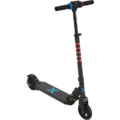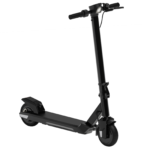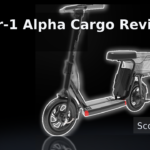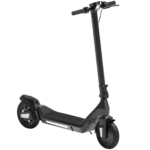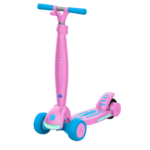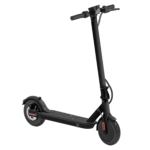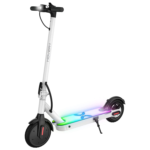- Home
- Scooters
- Electric Scooters
- Hover-1 Neo V
Hover-1 Neo V
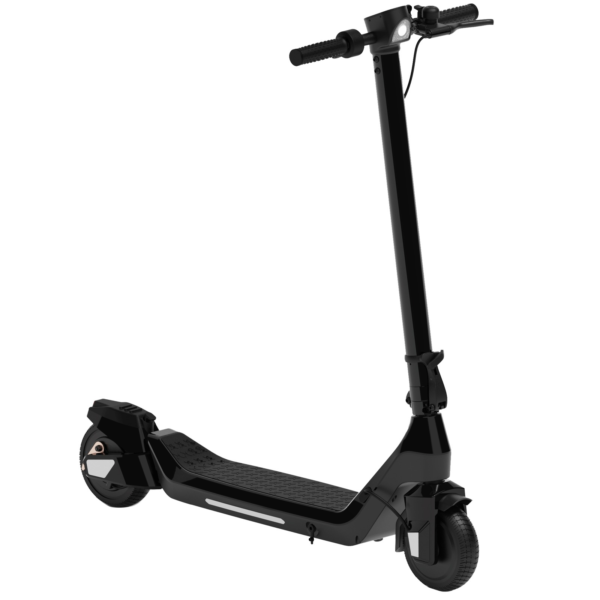

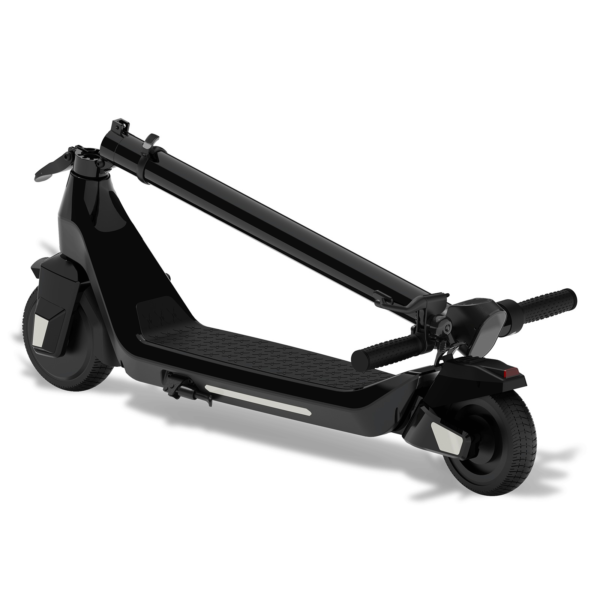

- Battery Range: 9 miles (14 km)
- Top Speed: 15 mph (24 km/h)
- Motor Power: 250 W
- Weight Capacity: 220 lb (100 kg)
- Charging Time: ~5 h
- Scooter Weight: 30.0 lb (13.6 kg)
PROS
- 15 mph top speed for teens
- 220 lb max load
- 6.5″ solid tires resist flats
- Deck lights improve visibility
- Rear drum + electronic braking
- Compact folding design
CONS
- Short range (9 miles)
- No suspension
- IP rating not specified
- No app features listed

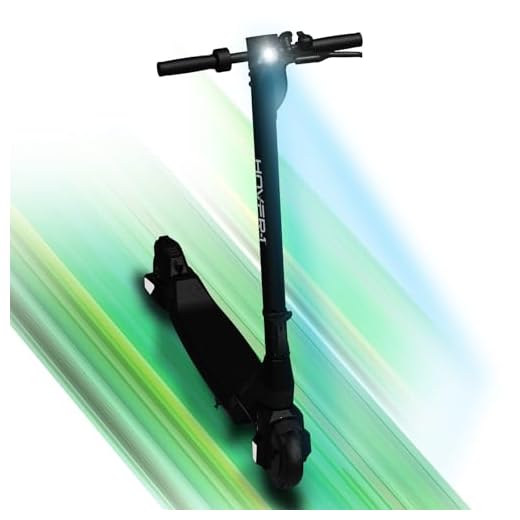
Table of contents
- What Is the Hover-1 Neo V?
- How the Hover-1 Neo V Works
- Key Specifications (clean table)
- Design & Build Quality
- Performance Fundamentals
- Battery, Range & Efficiency
- Ride Quality & Comfort
- Braking & Safety Features
- Portability & Daily Usability
- Maintenance & Care
- Weather & Seasonal Considerations
- Hover-1 Neo V vs Alternatives
- Who the Hover-1 Neo V Is (and Isn’t) For
- FAQs
- Glossary
- Final Thoughts
The Hover-1 Neo V is a compact, entry-class electric scooter built for short city hops, campus commutes, and easy storage. It favors simplicity over flash, with a reliable 250W front-hub motor, small solid tires, and an intuitive cockpit. Consequently, if you want a straightforward ride for a few miles at modest speeds without app complexity, the Hover-1 Neo V fits the brief. If you’re exploring the lineup, the Hover-1 Neo I sits alongside it as another compact option.
Because it’s light, folds quickly, and has a friendly learning curve, it suits new riders, students, and last-mile commuters who need to cover a few blocks on predictable pavement. Moreover, it doesn’t pretend to be a performance scooter. Instead, it focuses on practical basics—clear display, kick-to-start safety, cruise control, bright lights, and a simple brake setup—so you can get rolling with confidence.
What Is the Hover-1 Neo V?
At its core, the Neo V is a 36V commuter scooter with a modest 250W brushless hub motor, a small but efficient 4Ah battery, and 6.5-inch solid tires. As listed in the official specifications, top speed reaches up to 14 mph (22 km/h) in the high-speed mode, with a low-speed mode capped near 9 mph (15 km/h) for new riders or dense foot traffic. Additionally, the motor is quiet, the throttle is thumb-operated, and the braking system combines electronic braking with a rear drum for predictable stopping.
The frame uses a straightforward folding design that latches to the rear fender for quick carry. Meanwhile, an LED display sits at the center of the handlebar, showing speed, battery level, and mode indicators at a glance. A bell, headlight, taillight, and reflectors round out the safety package. Because solid tires remove the risk of flats, routine maintenance stays low, though they trade away some ride softness on rough surfaces.
Although compact, the deck has enough length for most foot stances, and the handlebar layout is intuitive even for first-time riders. Furthermore, the manufacturer recommends riders aged 12+ and sets a maximum supported weight of 220 lb (100 kg), which aligns with this scooter’s role as a simple, short-range urban mover.
How the Hover-1 Neo V Works
Motor and controller. A 250W brushless DC hub motor in the front wheel provides propulsion. Brushless motors are efficient, low-maintenance, and durable. The controller meters power in two selectable speed modes—Eco and Sport. Consequently, Eco keeps speeds and demand lower to help range, while Sport allows the scooter to reach its rated top speed on flat ground.
Battery and power flow. The battery pack is 36V nominal at 4Ah—about 144 watt-hours (Wh). That energy feeds the motor through the controller. Because it’s a small pack, the scooter favors smooth, steady riding rather than rapid bursts. As a result, you’ll get the best outcome by rolling up to speed, then cruising rather than surging the throttle.
Throttle and cruise control. The right-hand thumb throttle is simple to modulate. Hold a steady speed for roughly five seconds (above about 3 mph), and cruise control can kick in if enabled, maintaining your pace without your thumb on the lever. To disengage, tap the throttle or squeeze the brake.
Brakes and regeneration. The Neo V uses electronic braking paired with a rear drum brake. The electronic side adds a gentle motor-based drag when you release the throttle and pull the lever, while the drum provides mechanical stopping power. Together, they create a stable, predictable slowdown. Although the electronic system may recapture a touch of energy, its primary job is control, not charging.
User interface. The central LED display shows speed, battery bars, and mode icons. You can switch between mph and km/h with a quick multi-press of the power button. Additionally, the same single button toggles lights and switches riding modes.
Key Specifications (clean table)
Below is a clean, consolidated table of the official specifications, organized for quick scanning. Values appear in both imperial and metric where helpful.
General
| Item | Value |
|---|---|
| Model | H1-NEOV |
| Recommended Rider Age | 12+ |
| Max Supported Weight | 220 lb (100 kg) |
| Net Weight | 30.9 lb (14 kg) |
| Frame | Foldable aluminum-alloy design |
| Tire Type / Size | Solid, 6.5 in front & rear (16.5 cm) |
Performance & Power
| Item | Value |
|---|---|
| Motor | 250W brushless front-hub |
| Top Speed (Sport) | Up to 14 mph (22 km/h) |
| Top Speed (Eco) | Up to ~9 mph (15 km/h) |
| Max Incline | 15° (short inclines; see “Performance Fundamentals”) |
| Drive | Front wheel |
| Riding Modes | Eco / Sport |
| Throttle | Right-hand thumb |
Battery, Charging & Electrical
| Item | Value |
|---|---|
| Battery Voltage / Capacity | 36V, 4Ah (≈144 Wh) |
| Battery Type | Lithium-ion |
| Charge Time | Up to 5 hours |
| Charger Input | 100–240V AC, 50/60 Hz |
| Lights | Headlight & taillight; deck lighting on select trims |
| Units Toggle | mph / km/h |
| Cruise Control | Yes (enable/disable from display) |
Build & Dimensions (include folded dimensions)
| Item | Value |
|---|---|
| Unfolded Size | 38.8 × 18 × 42 in (98.6 × 45.6 × 106.5 cm) |
| Folded Size | 38.8 × 18 × 16 in (98.6 × 45.6 × 40.6 cm) |
| Folding Mechanism | Lever-lock with twist-safety and rear fender latch |
| Deck | Low-profile, textured deck with side reflectors |
Safety & Control
| Item | Value |
|---|---|
| Brakes | Electronic brake + rear drum |
| Reflectors | Integrated |
| Kick-to-Start | Yes (can be toggled) |
| Bell | Yes |
| UL Certification | UL2272 compliant |
| Ingress Protection | Not specified; avoid rain and standing water |
Features & Extras (include Cruise Control if relevant)
| Item | Value |
|---|---|
| Display | LED speed, battery, mode, icons |
| Speed Modes | Eco / Sport |
| Cruise Control | Yes (engages after steady speed) |
| Kickstand | Yes |
| Accessories | Standard charger, hex key, spare bolts |
Warranty & Compliance
| Item | Value |
|---|---|
| Warranty | Manufacturer limited warranty (terms vary by region) |
| Compliance | UL2272 safety standard |
Design & Build Quality
The design philosophy is minimal and functional. The stem folds with a mechanical lever and a twist-lock safety ring that prevents accidental release. When folded, the hook on the stem latches to the rear fender, which makes one-handed carry easier. Additionally, the deck is low to the ground and broad enough for staggered feet. Its textured surface improves grip, especially when you’re wearing flat, closed-toe shoes.
Fit and finish are consistent with a practical commuter. Hardware is basic but adequate; handlebar grips are comfortable enough for short trips, and the bell is easy to reach with your thumb. Likewise, the LED display is simple and readable in daylight. At night, the headlight offers forward visibility at neighborhood speeds, while the taillight and reflectors help you remain visible to others. The wiring is cleanly routed and protected around the folding joint.
Because the scooter uses 6.5-inch solid tires, there’s no risk of flats and no valve stems to check, which keeps maintenance low. However, solid tires transmit more vibration than pneumatics, so expect a firmer ride over cracks and seams. Overall, the chassis feels most settled below top speed on smooth surfaces, which is the environment it was designed for.
Performance Fundamentals
Acceleration feel. Off the line, the Neo V rolls forward smoothly after kick-to-start engages. It’s tuned for control over quick bursts. In Eco mode, takeoff is gentle—perfect for crowded areas. Switch to Sport, and it climbs to its modest top speed in a measured, predictable arc. As a result, the throttle ramp feels forgiving, so new riders won’t feel jolted.
Cruising stability. Once at pace, the scooter tracks straight on good asphalt. On patched or wavy pavement, the small wheels can transmit chatter through the deck and stem, so a relaxed knee bend helps the ride. Consequently, the chassis behaves best at 8–12 mph (13–19 km/h), where it feels composed and easy to guide.
Hill behavior. The spec sheet cites a 15° maximum incline capability, but that’s a short-burst rating. In real neighborhoods, slopes are usually measured in percent grade. On 7–10% urban hills, expect a noticeable speed drop. The motor will still pull, yet it prefers gradual grades. Therefore, start with a rolling kick, keep your body weight centered, and avoid stopping mid-hill. For repeated steep climbs, a higher-power scooter would be more appropriate.
Braking control. The combination of electronic braking and the rear drum brake yields a firm, linear slowdown. Light lever pulls bring steady deceleration; deeper pulls add stronger bite from the drum. Because the feel is consistent, you can judge stopping distances more accurately. Since the front wheel drives, weight shifts forward a bit during braking; keep your knees loose and your weight low for stability.
Battery, Range & Efficiency
Battery size and what it means. The 36V, 4Ah pack equals roughly 144 Wh. That’s an urban-errand capacity. It’s easiest to think of it as a “few miles at neighborhood speeds” battery. Therefore, treat range as a spectrum, not a fixed number.
Rated vs. real-world range. The rating is up to 7 miles (11 km) under ideal conditions. In practice, range depends on weight, ambient temperature, terrain, tire condition, and riding style. A lighter rider who cruises at moderate speed on flat, warm pavement can approach the rated figure. Conversely, a heavier rider making many starts and stops, or riding in headwinds or cold weather, may see less.
Energy-saving habits. To stretch range, use Eco mode in dense areas, roll gently on the throttle, and maintain steady cruise. Additionally, keep your cruising speed comfortable rather than maxed-out. Because solid tires never go flat, there’s no pressure to check, but you should still inspect tire tread for wear. Avoid constant hard accelerations and abrupt stops, as they waste energy and reduce effective range.
Charging best practices. Plan for up to 5 hours for a full charge from low battery. After the charger LED turns green, unplug both ends. If storing the scooter, top up the battery every few weeks and keep it in a dry space, away from extreme heat or cold. Above all, never use an off-brand charger; stick with the included unit to protect the battery and electronics.
Ride Quality & Comfort
Tires and feel. Solid 6.5-inch tires are puncture-proof and maintenance-friendly. The trade-off is less cushioning. On smooth sidewalks and streets, the ride is quiet and orderly. Over expansion joints and small cracks, you’ll feel sharper edges than you would with pneumatic tires. Even so, the scooter remains controllable if you keep your knees soft and your speed sensible.
Stability and stem behavior. At neighborhood speeds, the frame feels calm. Above that range, strong bumps can introduce some vibration through the stem simply because the wheels are small. Therefore, keep your arms relaxed and your knees slightly bent; your legs become the suspension here. The short wheelbase helps the scooter turn tightly, which is great for weaving around pedestrians at low speed.
Ergonomics. The deck’s low height makes starts and stops easy. The handlebar controls are within natural reach. The bell sits on the left near the brake lever, so you can signal without changing your grip. Additionally, the display is centered and readable, with icons for lights, speed mode, and cruise control status.
Braking & Safety Features
Brake system. The electronic brake provides a smooth initial slowdown, while the rear drum brake adds mechanical bite when you pull the lever further. This layered approach keeps the scooter predictable for new riders. It won’t lock up abruptly on dry, flat pavement at neighborhood speeds; however, you should still avoid hard braking on slick or dusty ground.
Lights and visibility. The headlight and taillight help you be seen at dusk. Reflectors on the body increase your side visibility. If your scooter trim includes deck lights, they improve conspicuity near curbs and driveways. For even better visibility, bright clothing helps drivers see you earlier.
IP and wet-weather use. An official ingress protection rating isn’t published for this model. The manufacturer advises against riding in rain, through puddles, or on wet surfaces. Because water reduces traction and may damage components, err on the side of caution. If a storm rolls in, fold and carry the scooter indoors.
General safety habits. Use the bell to signal your presence. Keep a longer following distance than you would on a bicycle because your top speed is lower and your braking distances rely on small tires. When in doubt, slow down. Moreover, practice emergency stops in a safe, empty area so you know how the brakes feel at different lever pulls.
Portability & Daily Usability
Weight and carry. At 30.9 lb (14 kg), the scooter is manageable for most adults on short stair climbs or from trunk to sidewalk. The folded package is compact—38.8 × 18 × 16 in (98.6 × 45.6 × 40.6 cm)—and latches to the rear fender for quick pickup. Because the deck is low, it also stores neatly under a desk or in a closet.
Folding sequence. Rotate the twist-lock safety ring, pull the main latch, and lower the stem until the hook catches the rear fender. Reverse to unfold, then snap the latch and rotate the safety ring back into place. Crucially, check that everything is secure before rolling.
Storage and security. Indoors is best. If you must leave it in a shared space, consider a basic lock through a fixed object, recognizing that light scooters are easier to lift than to cut free. Don’t leave the scooter in direct sun or in a hot car, and never charge unattended in a cluttered space.
Commuter rhythm. The scooter’s strength is quick door-to-door travel on known routes. It starts with a kick, cruises steadily in Sport or Eco, and packs away without fuss. As a result, its predictable controls help it slot into daily routines, especially if your ride is under a few miles each way.
Maintenance & Care
Fast checks before rides.
- Scan the tires for cuts or flat-spotted areas.
- Squeeze the brake lever; confirm firm pressure and responsive feel.
- Verify the folding latch is fully engaged and the twist-lock is seated.
- Confirm battery bars and lights work.
Weekly quick tasks.
- Wipe dust from the deck and controls.
- Inspect the rear drum area for debris.
- Make sure the kickstand springs back cleanly.
Monthly or every ~100 miles (160 km).
- Check all accessible bolts (stem clamp, handlebar clamp, brake lever mount). Tighten gently if needed—do not overtighten.
- Inspect the rear brake cable for fraying and adjust slack if the lever feels mushy.
- Clean the charging port cap and ensure it seals properly.
Battery habits. Keep the pack between roughly 20% and 80% for day-to-day use, and top to full before longer outings. If storing for weeks, leave it around half-charge and refresh monthly. Additionally, charge at room temperature, never when the pack is very hot or very cold.
Firmware/app. The Neo V does not rely on app-based updates. That simplifies ownership and removes one maintenance variable. Even so, save the manual; it lists display shortcuts for mode changes and unit toggles.
Weather & Seasonal Considerations
Rain. Avoid it. Wet roads reduce grip, and standing water can damage electronics. If you’re caught out, walk the scooter to shelter, dry it gently, and let it sit to stabilize before charging. Consequently, you reduce both slip risk and potential electrical issues.
Heat. In high temperatures, the battery and controller may reduce output to protect themselves. Store the scooter out of direct sun, especially while charging. Above all, never cover the scooter with insulating materials while it’s plugged in.
Cold. Below about 40°F (4°C), expect reduced power and range. Ride gently and accept a lower cruising speed to keep the pack from sagging. Afterward, charge indoors at room temperature once the scooter warms up.
Seasonal storage. If you pause riding for winter or summer travel, clean the scooter, set the battery near half, and store it in a dry, ventilated area. In addition, calendar a reminder to top it up every few weeks.
Hover-1 Neo V vs Alternatives
Where it excels. The Neo V shines as a first scooter or a dependable last-mile tool. Its predictable controls, kick-to-start safety, and low maintenance make it approachable. Solid tires mean no flats on the way to class. Moreover, the folding latch is intuitive, and the weight is manageable for short carries.
Where to consider another class.
- Long daily distances. If you need to cover 8–12 miles each way, consider a larger battery model; you’ll want a higher watt-hour pack and a more efficient cruising speed.
- Steep terrain. For frequent 10%+ grades or long hills, a higher-power motor (or dual-motor configuration) maintains speed and reduces overheating risk.
- Rough pavement. If your route includes potholes or brickwork, pneumatic tires and suspension will ride smoother and keep speed more consistent.
- Higher speeds. If you plan to cruise faster than neighborhood pace, look at scooters with larger wheels, wider decks, and stronger brakes.
Because the Neo V stays in its lane—compact, simple, and short-range—it avoids complexity. That focus is a benefit for riders who value ease of use over raw power.
Who the Hover-1 Neo V Is (and Isn’t) For
Ideal for:
- Students zipping between buildings and lots on smooth paths.
- New riders who want a stable, no-drama introduction to e-scooters.
- Apartment dwellers with limited storage who need a compact fold.
- Multimodal commuters connecting a bus or train to the office door.
- Errand-runners who value a quick, maintenance-light hop around the neighborhood.
Not ideal for:
- Riders expecting long-range, high-speed commuting.
- Hilly-city commuters facing repeated steep grades.
- Pothole-prone routes where bigger pneumatic tires and suspension are essential.
- Heavier riders who prefer brisk acceleration and strong hill holding.
If you recognize your use case in the first list, the Neo V’s simplicity becomes an advantage. Conversely, if you see yourself in the second list, the next class up will serve you better.
FAQs
1) How fast does it go, and can I change modes easily?
Top speed is up to 14 mph (22 km/h) in Sport. Press the power button twice to toggle between Eco and Sport. Eco caps speed lower to conserve energy.
2) What real-world range should I expect?
The rating is up to 7 miles (11 km). Many riders see less when it’s cold, hilly, or stop-and-go. Smooth cruising on flat, warm pavement delivers the best results.
3) Does it have cruise control?
Yes. When enabled, maintain a steady speed for about five seconds above a walking pace. You’ll hear a beep as cruise engages. Tap throttle or brake to exit.
4) How does the braking feel?
It’s a combination of electronic braking and a rear drum. Light lever pulls slow you smoothly; harder pulls add firm, predictable bite.
5) Can I ride it in the rain?
No. There’s no published IP rating for this model, and the manufacturer advises against riding in wet conditions or through puddles.
6) What should I check before each ride?
Confirm the latch and twist-lock are seated, lights work, tires are free of damage, and the brake feels firm. Also, make sure your battery has enough charge for your route.
7) Where can I find a quick “Hover-1 Neo V overview”?
You’re reading it. This Hover-1 Neo V overview distills design, performance, range, safety, and care into one place so you can decide if it fits your needs.
Glossary
Amp-hour (Ah). A measure of battery capacity. The 4Ah at 36V equates to about 144 Wh of energy.
Watt-hour (Wh). Battery energy. Multiply voltage by amp-hours to estimate total stored energy.
Brushless motor. An efficient, low-maintenance electric motor that uses electronic commutation instead of brushes.
Controller. The scooter’s “brain” that regulates power from the battery to the motor and manages modes.
Regen / Electronic braking. Motor-based braking that slows the scooter and may recover a small amount of energy.
Drum brake. A sealed mechanical brake that uses internal shoes to create friction inside a drum.
Kick-to-start. A safety feature requiring a small push before the motor engages, preventing unintended launch.
Cruise control. Maintains a steady speed without pressing the throttle. Disengages with throttle or brake input.
Stem flex. The amount the steering column flexes under load. Small-wheel scooters can feel more vibration through the stem on rough surfaces.
UL2272. A safety certification standard for electrical systems in personal e-mobility devices.
IP rating. Ingress Protection rating against dust and water. Not specified here; avoid wet use.
Percent grade vs degrees. Street hills are usually rated in percent grade; the spec sheet’s degree figure doesn’t map 1:1.
Solid tire. Airless tire that resists punctures but rides firmer than pneumatic (air-filled) tires.
Throttle ramp. How quickly the controller allows power to build as you press the throttle.
Wheelbase. The distance between the wheel centers. A shorter wheelbase turns tighter but can feel more reactive.
Deck height. The vertical distance from ground to deck. Lower decks ease starts and stops.
Final Thoughts
The Hover-1 Neo V leans into ease: simple controls, modest speed, and low-maintenance solid tires. It’s a friendly choice for short commutes and campus loops, and it keeps ownership friction low by skipping app dependencies and complicated adjustments. Therefore, if you treat range as a flexible number, keep speeds sensible, and mind road quality, you’ll get a calm, dependable ride out of a compact package.
If your daily needs outgrow its battery and motor, consider stepping up in class. However, if your routine fits its sweet spot—short, predictable, and on decent pavement—the Neo V’s simplicity becomes its best feature.
Specifications
General
| Model The Model specifies the exact version or name of the scooter. It helps identify its unique design, features, and specifications within the manufacturer’s product line. Knowing the model makes it easier to compare options, find compatible accessories, or look up support information. | Neo V |
| Brand The Brand identifies the manufacturer or company that designs and produces the scooter. A trusted brand is a sign of quality, reliability, and good customer support. Well-known brands often have higher standards for safety, performance, and after-sales service, giving you more confidence in your purchase. | Hover-1 |
| Release Date The Release Date indicates when the scooter model was officially launched on the market. This helps you know how current the design, technology, and features are. A newer release date often means updated components, improved performance, and the latest safety or smart features. | 17 November 2025 |
| Recommended Age Recommended Age indicates the minimum age range that the scooter is designed for, based on safety, size, and ease of use. Following the recommended age helps ensure that riders can handle the scooter’s speed, weight, and controls comfortably and safely. Always check local laws and use protective gear, especially for younger riders. | 12+ |
Performance & Power
| Motor Power (Wattage) What it means: The motor power, measured in watts (W), shows how strong the scooter’s electric motor is. Why it matters: Higher wattage usually means better acceleration, more torque, and improved performance on hills or rough terrain. For example, a 250W motor is good for flat city roads and light riders, while a 500W or 1000W motor provides more power for faster speeds or climbing steep inclines. | 250 W front hub motor |
| Top Speed The Top Speed indicates the maximum speed that the scooter can reach under optimal conditions. It’s usually measured on level ground with a fully charged battery and an average rider weight. A higher top speed allows you to travel longer distances faster, but always ensure you ride within legal speed limits and your personal comfort zone for safety. | 15 mph (24 km/h) |
| Battery Capacity Battery Capacity refers to the total amount of energy the scooter’s battery can store, usually measured in ampere-hours (Ah) or watt-hours (Wh). A higher battery capacity means you can ride longer distances on a single charge, reducing the need for frequent recharging. Keep in mind that actual range can vary depending on rider weight, terrain, speed, and weather conditions. | 36 V 4 Ah (144 Wh) |
| Estimated Range per Charge The Estimated Range per Charge indicates the average distance the scooter can travel on a single full battery charge. This range is calculated under optimal conditions, such as flat terrain, moderate speed, and average rider weight. Real-world range may vary depending on riding style, terrain, weather, and load. A longer range means fewer recharges and greater freedom for longer trips. | Up to 9 miles (14 km) |
| Hill Climb Ability Hill Climb Ability describes the maximum incline or slope that the scooter can handle while maintaining stable performance. It’s typically expressed as a percentage or in degrees. A higher hill climb rating means the scooter can tackle steeper hills without losing too much speed or power. Actual climbing performance may vary based on rider weight, battery charge, and terrain conditions. | Up to 15° inclines |
| Drive System The Drive System refers to how power from the motor is delivered to the wheels. Electric scooters typically use either a hub motor (directly integrated into the wheel) or a chain/belt drive system. A high-quality drive system ensures smooth acceleration, efficient power transfer, and low maintenance. The choice of drive system affects performance, noise level, and overall ride experience. | Front hub (FWD) |
Charging & Electrical
| Charging Time Charging Time indicates how long it takes to fully recharge the scooter’s battery from empty to 100% using the standard charger provided. Faster charging means less downtime and more time on the road. Actual charging time may vary slightly depending on battery capacity, charger output, and environmental conditions. | Approx. 5 hours |
| Battery Type Battery Type refers to the specific technology used in the scooter’s battery, which affects performance, lifespan, weight, and charging time. Most modern electric scooters use high-quality lithium-ion (Li-ion) batteries because they offer a good balance of energy density, durability, and low maintenance. A reliable battery type ensures consistent power delivery and longer riding ranges. | Lithium-ion pack |
| Removable Battery A Removable Battery means the battery pack can be easily detached from the scooter for convenient charging and replacement. This feature allows you to charge the battery separately, swap it with a spare for extended range, or securely store it indoors in extreme weather. Removable batteries add flexibility and make it easier to keep your scooter powered up wherever you are. | Non-removable internal battery |
| Regenerative Braking Regenerative Braking is an energy-saving feature that converts some of the energy normally lost during braking back into battery power. When you slow down or brake, the motor works in reverse to generate electricity, which helps extend the scooter’s range and improves overall efficiency. This system also reduces wear on traditional brake components, leading to lower maintenance over time. | Not specified |
| Lighting Lighting refers to the built-in front and rear lights that enhance visibility and safety when riding in low-light conditions or at night. Good lighting helps you see the road ahead and ensures that other road users can see you. Many scooters include LED headlights, taillights, and sometimes brake lights or side reflectors for added safety and compliance with local traffic regulations. | LED headlight + rear LED/brake + white deck lights + reflectors |
Build & Dimensions
| Scooter Weight Scooter Weight refers to the total weight of the scooter when fully assembled, including the battery. This affects how easy it is to carry, lift, and store the scooter when not in use. A lighter scooter is more portable and convenient for commuting, especially if you need to carry it upstairs or onto public transport. Keep in mind that a sturdy frame and quality components may add to the weight but also contribute to better durability and ride stability. | 30.0 lb (13.6 kg) |
| Maximum Rider Weight Maximum Rider Weight indicates the highest rider weight that the scooter is designed to safely support while maintaining optimal performance and stability. Staying within this limit helps ensure reliable acceleration, braking, and climbing ability, and it protects the frame, suspension, and motor from excessive strain. Exceeding the recommended limit may reduce performance and increase wear on components. | 220 lb (100 kg) |
| Deck Size Deck Size refers to the dimensions of the scooter’s standing platform. A wider and longer deck provides more foot space, allowing you to stand comfortably and adjust your stance while riding. A well-sized deck improves balance and stability, especially on longer rides or at higher speeds. Compact decks, on the other hand, help keep the scooter lightweight and portable. | Aluminum alloy frame; streamlined design |
| Handlebar Height Handlebar Height refers to the distance from the deck to the handlebars, which affects your riding posture and comfort. An appropriate handlebar height helps you maintain good balance, reduces strain on your back and arms, and makes steering more comfortable. Some scooters have adjustable handlebars to fit riders of different heights, while others have a fixed height for a streamlined design. | Fixed (unfolded height 41.9 in) |
| Folding Mechanism The Folding Mechanism describes how easily and securely the scooter can be folded for carrying and storage. A well-designed folding system lets you quickly collapse the scooter into a compact size, making it convenient to transport on public transit, store under a desk, or fit into a car trunk. Look for sturdy latches and safety locks to ensure the scooter stays firmly in place when folded or unfolded. | Quick-fold latch |
| Dimensions Folded Dimensions indicate the size of the scooter when it’s fully folded. This measurement shows how much space the scooter will take up when stored or carried, making it easier to check if it will fit in your car trunk, under a desk, or in a closet. Compact folded dimensions are ideal for commuters who need to bring their scooter on public transport or store it in tight spaces. | Folded: 47.2 × 17.7 × 21.3 in; Unfolded: 47.2 × 17.7 × 41.9 in |
| Material Material refers to the primary construction materials used for the scooter’s frame and key components. High-quality materials like aircraft-grade aluminum, reinforced steel, or durable composites provide strength, stability, and a lighter overall weight. A sturdy material ensures the scooter can handle daily wear and tear while maintaining safety and performance. | Aluminum alloy |
Safety & Control
| Brake Type(s) Brake Type(s) describe the braking systems the scooter uses to help you slow down or stop safely. Common brake types include mechanical brakes (like drum or disc brakes), electronic brakes, and foot brakes. Many scooters combine multiple braking systems for added safety and shorter stopping distances. The type and quality of brakes affect your control, especially when riding at higher speeds or on slopes. | Electronic front brake + rear drum brake |
| Suspension Suspension refers to the system that absorbs shocks and vibrations while riding, providing a smoother and more comfortable ride over uneven or rough surfaces. Scooters may have front suspension, rear suspension, or dual suspension for better shock absorption and stability. Good suspension helps reduce rider fatigue and improves control, especially when riding on bumpy roads or off-road paths. | None |
| Tire Type Tire Type refers to the kind of tires the scooter uses, which directly affects ride comfort, traction, and maintenance. Common types include solid (airless) tires, pneumatic (air-filled) tires, or hybrid options. Pneumatic tires offer better shock absorption and a smoother ride on rough surfaces, while solid tires are puncture-proof and require less upkeep. The right tire type helps ensure safe handling and a comfortable ride in different conditions. | 6.5″ solid tires |
| Tire Size Tire Size indicates the diameter and width of the scooter’s tires, which affect ride comfort, stability, and how well the scooter handles different terrains. Larger tires generally offer better shock absorption and a smoother ride over bumps and rough surfaces, while smaller tires keep the scooter lighter and more portable. Choosing the right tire size helps ensure a balance between agility and comfort. | 6.5-inch |
| Kickstand The Kickstand is a built-in stand that allows you to park your scooter upright when it’s not in use. A sturdy kickstand keeps the scooter stable and prevents it from tipping over, protecting it from scratches and damage. It also makes storing and accessing your scooter more convenient, whether you’re at home, work, or on the go. | Side kickstand |
| Water Resistance Rating Water Resistance Rating indicates how well the scooter is protected against water and moisture, usually shown as an IP (Ingress Protection) rating. This rating helps you understand whether the scooter can handle light rain, splashes, or wet roads without damage. While most scooters are not fully waterproof, a good water resistance rating adds peace of mind when riding in changing weather conditions. Always avoid deep puddles or submerging the scooter to protect its electrical components. | Not specified |
Features & Extras
| Display/Console The Display (or Console) shows important real-time information about your ride, helping you monitor your scooter’s status at a glance. Typical displays show speed, battery level, distance traveled, and riding mode. Some models also include additional features like Bluetooth connectivity, app integration, or backlighting for better visibility at night. A clear and easy-to-read display enhances safety and convenience on every trip. | LED digital display (speed, battery, mode) |
| Ride Modes Ride Modes refer to the different speed and power settings you can choose to match your riding style or road conditions. Common modes include eco for maximum range and energy efficiency, standard for everyday balance, and sport or turbo for higher speed and stronger acceleration. Switching between ride modes allows you to customize performance, conserve battery, and ride safely in various environments. | Not specified |
| Smart App Connectivity Smart App Connectivity lets you pair your scooter with a dedicated mobile app via Bluetooth. Using the app, you can monitor real-time ride stats like speed, battery level, and range, adjust settings such as ride modes or cruise control, lock the scooter for added security, and sometimes receive firmware updates. This feature adds convenience and allows you to personalize your riding experience right from your smartphone. | Not specified |
| Anti-Theft System The Anti-Theft System helps protect your scooter from unauthorized use or theft. This feature can include built-in alarms, electronic motor locks, GPS tracking, or remote locking through a mobile app. A good anti-theft system provides peace of mind when parking your scooter in public spaces, adding an extra layer of security to safeguard your investment. | Not specified |
| Cruise Control Cruise Control allows you to maintain a steady speed without continuously holding the throttle. This feature makes longer rides more comfortable by reducing hand fatigue and providing a smoother, more relaxed riding experience — especially on flat, open roads or bike lanes. For safety, cruise control can usually be easily activated or deactivated while riding. | Not specified |
| Accessories Included Accessories Included lists the additional items that come with the scooter to enhance your riding experience and convenience. Common accessories may include a charger, kickstand, bell, lights, phone holder, or carrying strap. These extras add value by making your scooter safer, easier to use, and ready to ride straight out of the box. | Scooter, wall charger, manual |
Warranty & Compliance
| Warranty Period The Warranty Period indicates how long the manufacturer guarantees the scooter against defects in materials and workmanship under normal use. A good warranty provides peace of mind, showing the brand’s confidence in its product quality. Always check what parts are covered, such as the frame, battery, and motor, and follow the maintenance guidelines to keep your warranty valid. | 6 months (parts & labor) |
| Certifications Certifications confirm that the scooter meets specific safety, quality, and environmental standards set by recognized organizations or regulatory bodies. Common certifications may include CE, RoHS, UL, or other local compliance marks, depending on your region. These certifications ensure that the scooter is manufactured to high standards and is safe and legal to use in your country. | Region-dependent |
Price Comparison




